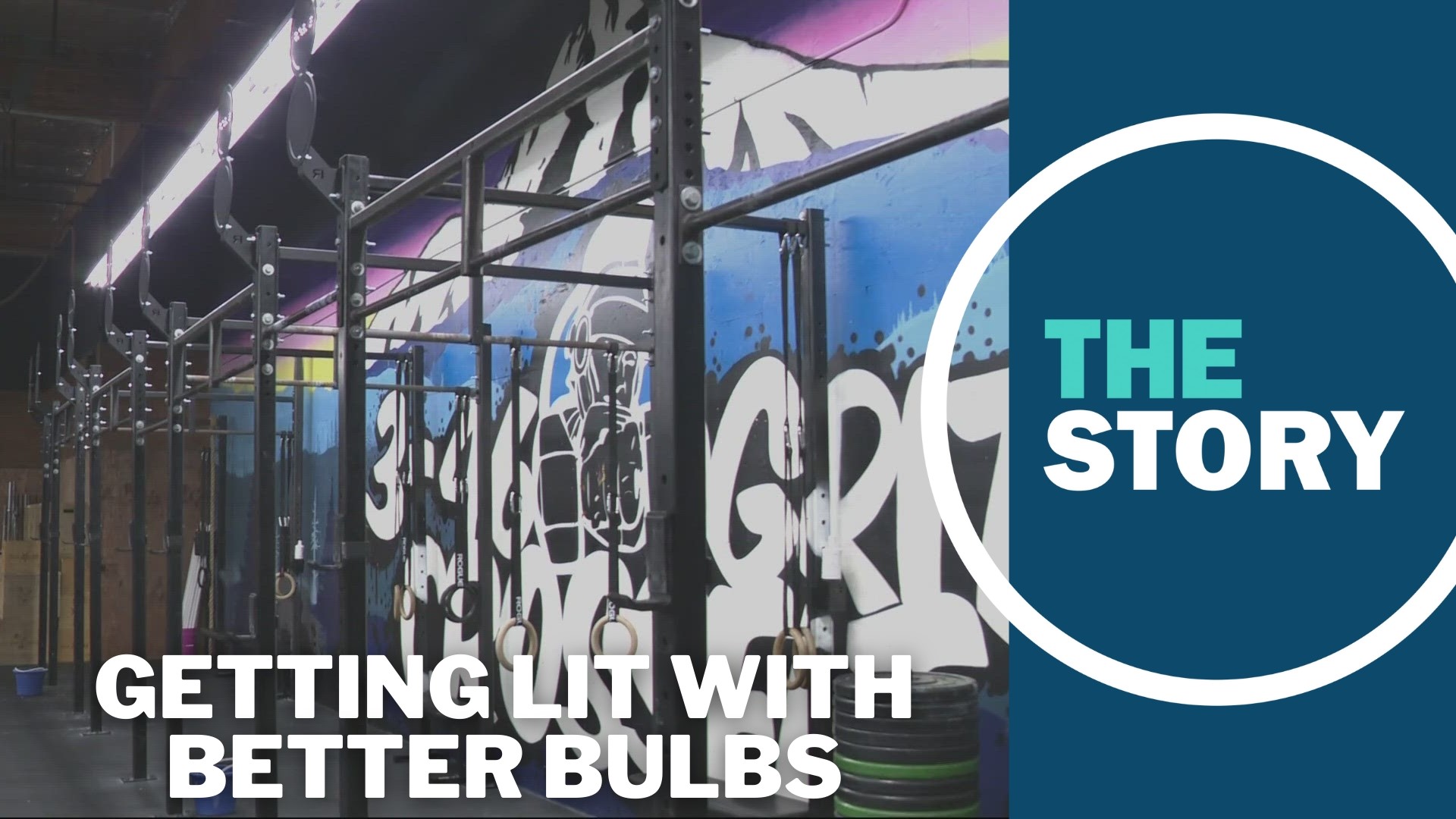GRESHAM, Ore. —
Flip the light switch at 3-46 Grit CrossFit in Gresham and you’ll see 5,000 square feet of workout space, all exceptionally well lit by rows and rows of LED lights.
But it wasn’t always that way.
For years, owner Randy Lauer had been using the fluorescent lights that were installed in the space when he moved in. They left a lot to be desired, though. Climbing up 15 feet to change the bulbs was becoming increasingly cumbersome and the quality of the light wasn’t great.
“There were dark corners everywhere and the flickering was terrible,” Lauer said. “It just felt like you were in a conference room for hours.”
In 2020, Lauer began looking to upgrade, but he wasn’t prepared for the cost.
“It was a hefty price tag,” he said. “One estimate that we got, which was on the high side, was about $34,000.”
With pandemic restrictions cutting his business revenue by as much as 70%, the upgrade wasn’t in the budget, so Lauer counted himself extremely fortunate when the Energy Trust of Oregon contacted him asking if he wanted to apply for a program that offered the lighting upgrades he’d been seeking, at no cost.
“It was destiny,” Lauer said with a laugh.
The end of an era
Earlier this month, the Biden administration implemented new rules through the Department of Energy around lightbulb efficiency. They stipulated that light bulbs must produce no fewer than 45 lumens — lumens are a measure of light production — per watt.
The rules don’t explicitly ban traditional light bulbs, but that level of efficiency is nearly impossible for incandescent and fluorescent bulbs, meaning that most stores won’t be able to sell them.
There are a few exceptions for bulbs that are used in bug lights, stoves and other specialty applications; but otherwise LEDs are the future of lighting, said U.S. Secretary of Energy Jennifer Granholm — a future that will see consumer savings and environmental benefits.
“By raising energy efficiency standards for lightbulbs, we’re putting $3 billion back in the pockets of American consumers every year and substantially reducing domestic carbon emissions,” Granholm said in a statement. “This measure will accelerate progress to deliver the best products to American consumers and build a better and brighter future.”
Government estimates put the climate savings of the program around 222 metric tons of carbon dioxide over the next three decades, roughly equivalent to the yearly household emissions of 28 million homes.
An offer that seemed too good to be true
After Lauer got in touch with the people at Energy Trust, he said the application process was straightforward.
He filled out an online application, made sure he met all the requirements, sent it in and waited.
When he got the email shortly thereafter saying he’d been approved and the whole project would be completed at no cost to him, he said it was hard not to be skeptical.
“It said 'no cost' and then I wrote back twice, like ‘No cost means no cost?’” Lauer said. “They're like ‘Absolutely no cost,’ and so I said, 'Let's sign up, let's do it.'”
Soon after the application was approved, Energy Trust sent an expert over to do an assessment of Lauer’s lighting needs, then found a contractor, and within a few days Lauer’s gym members were working out under new lights.
And the benefits were immediate, Lauer said.
“When it was done and completed, everybody that came in that next day said that they were amazed and shocked about how the lighting looked,” Lauer said. “It's night and day difference compared to the fluorescent lighting that we used to have in here. This is more natural. It's more warm.”
Because LEDs last for anywhere between 25 and 50 times longer than traditional bulbs, Lauer won’t have to worry about climbing a ladder to change out a flickering fluorescent tube anytime soon.
And the new bulbs are more efficient, too.
“Upgrading to LED lighting uses about 75% less energy than their standard lighting,” said Cameron Starr, senior customer experience operations manager with Energy Trust.
For Lauer, that translates to a savings of about $100 a month on his power bill, money he said he’ll be investing back into the business.
There are some eligibility requirements for other businesses who want to take advantage of the program. Businesses must get their electricity from either Pacific Power or Portland General Electric, have fewer than 20 employees and/or less than 20,000 square feet of space.
Starr said the lighting program is just part of what the Energy Trust, a nonprofit that gets its funding from local utilities and their ratepayers, does to help residents and businesses use energy more efficiently.
“We know that small businesses over the last three years have been hit hard with everything going on," Starr said. ”We're funded by those ratepayers, so we help those ratepayers make more energy efficient upgrades in their homes and businesses.”

